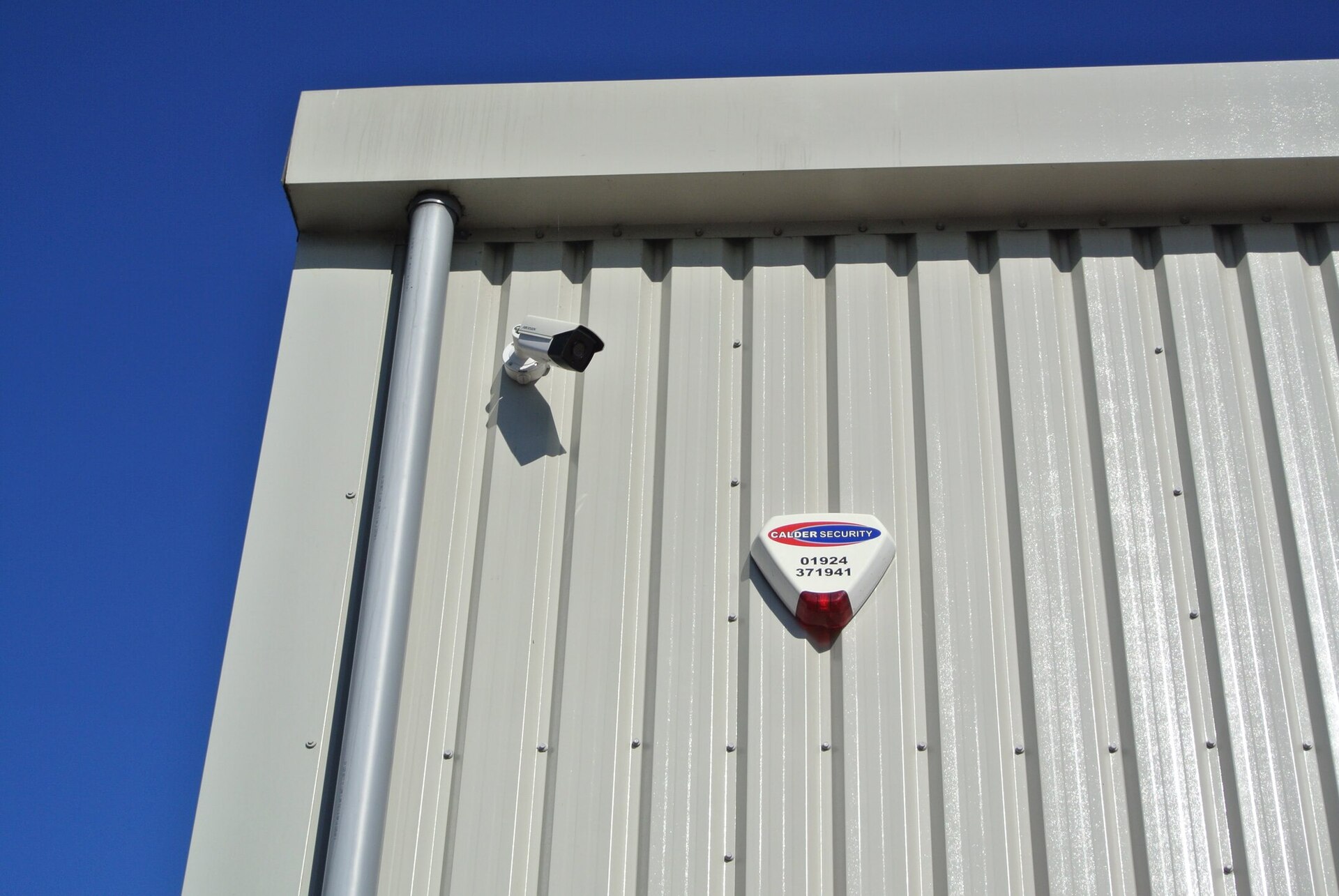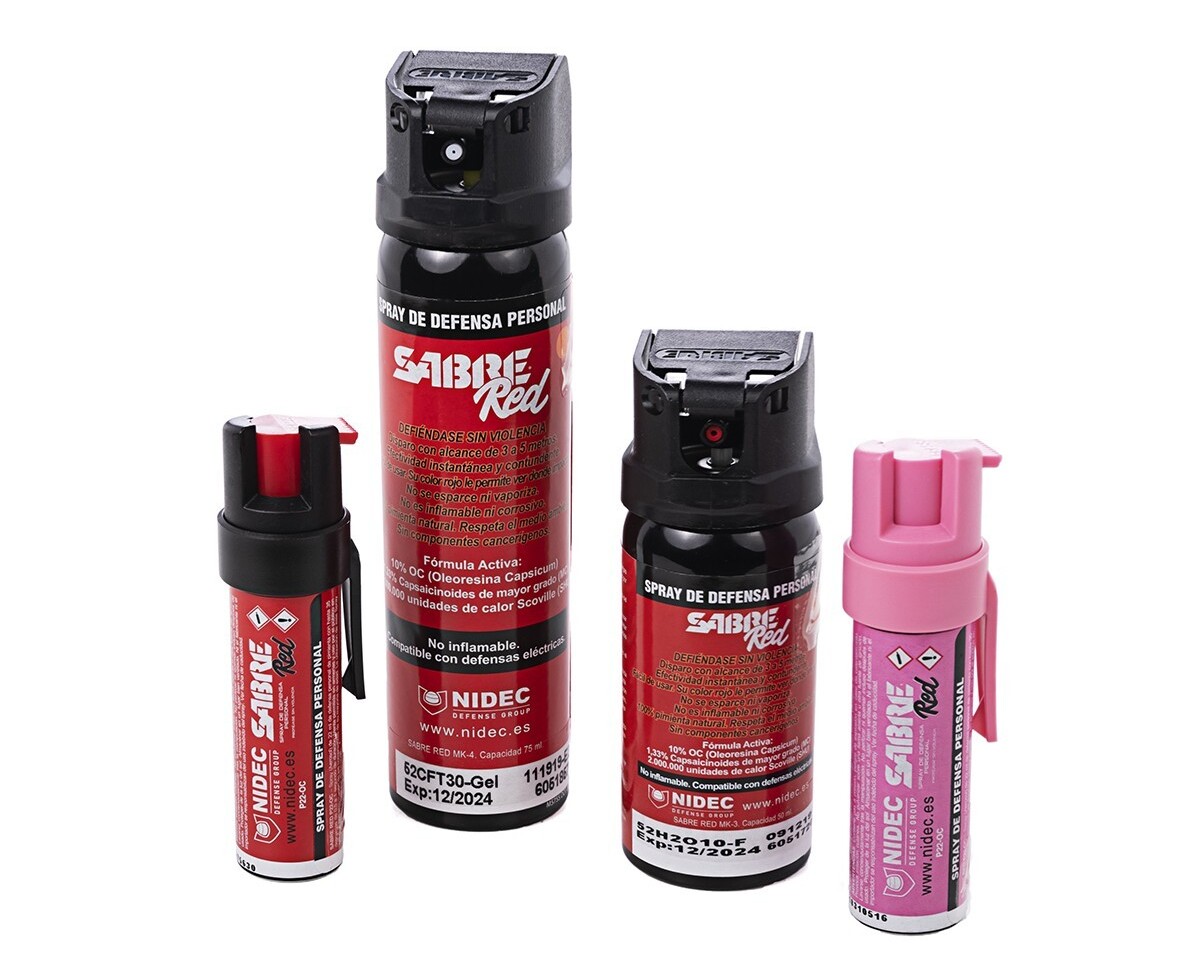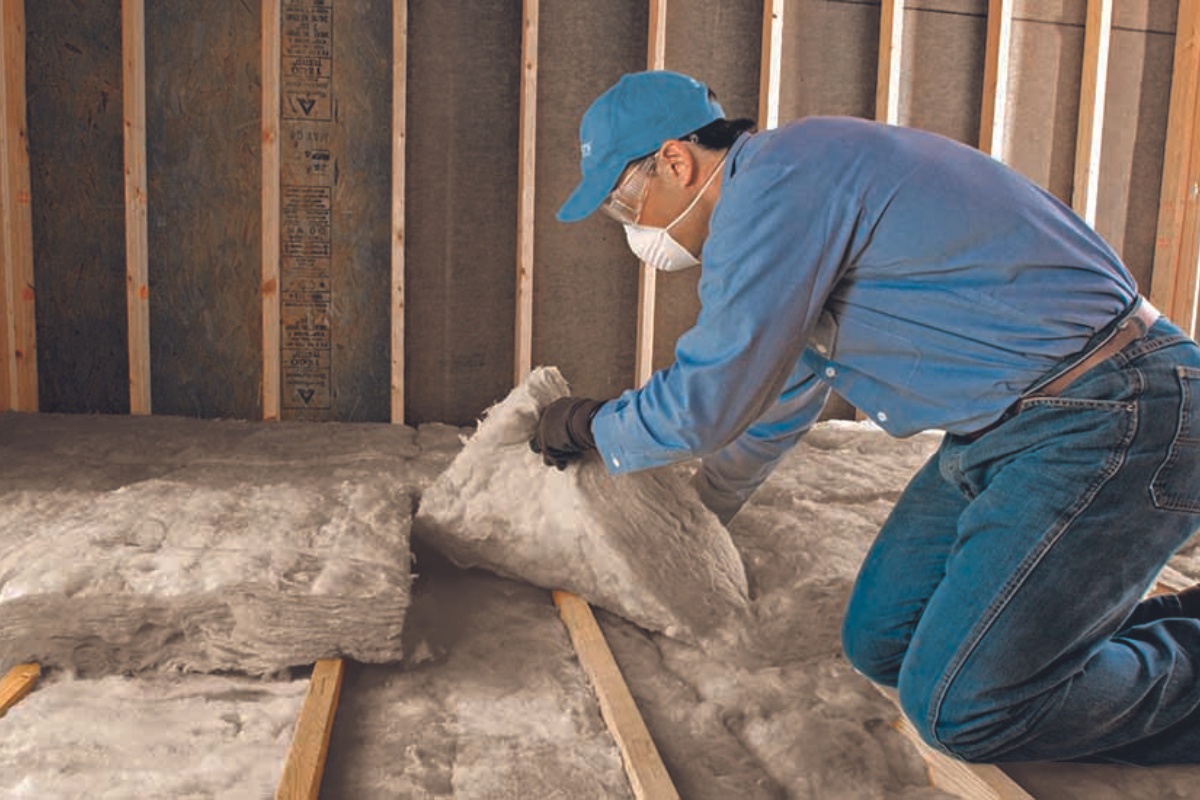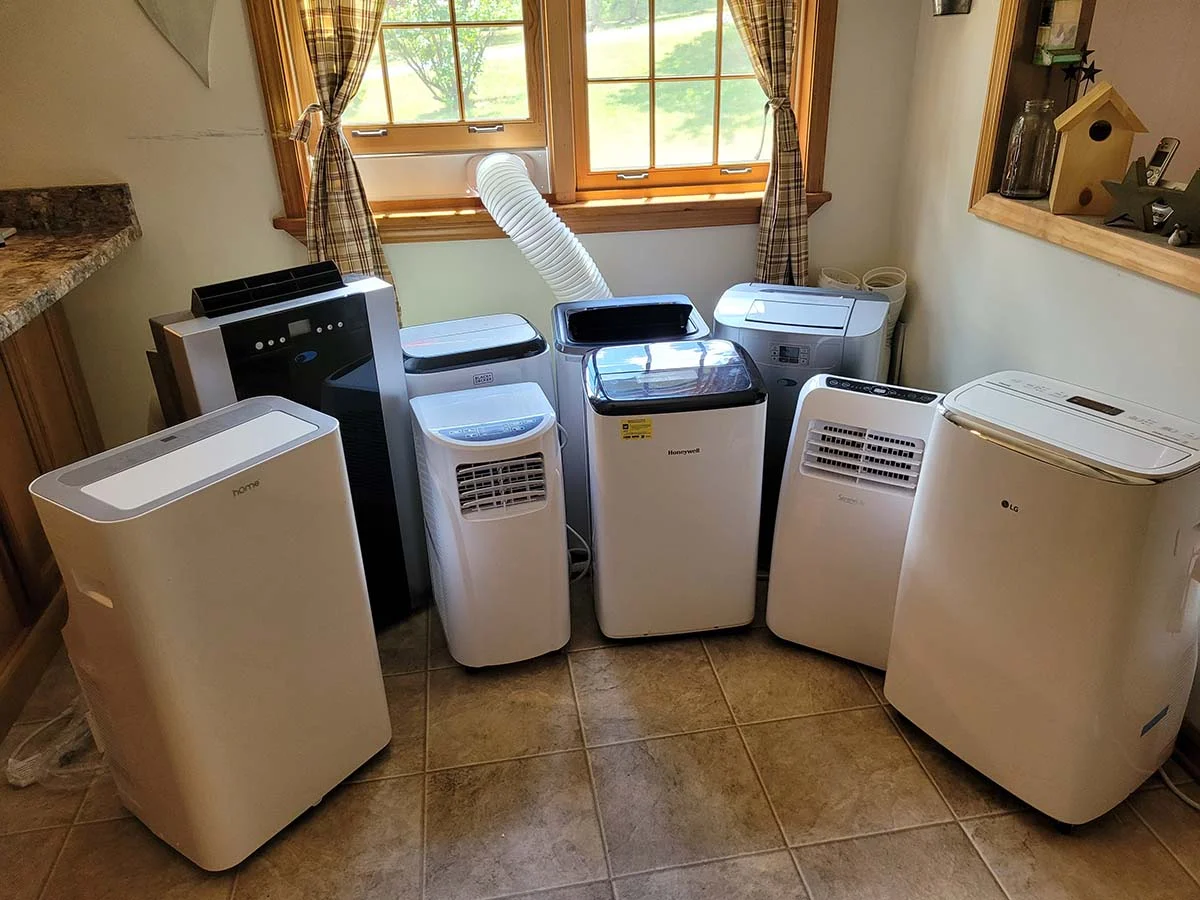Home>Home Maintenance>How To Market Your Home Repair Business Locally
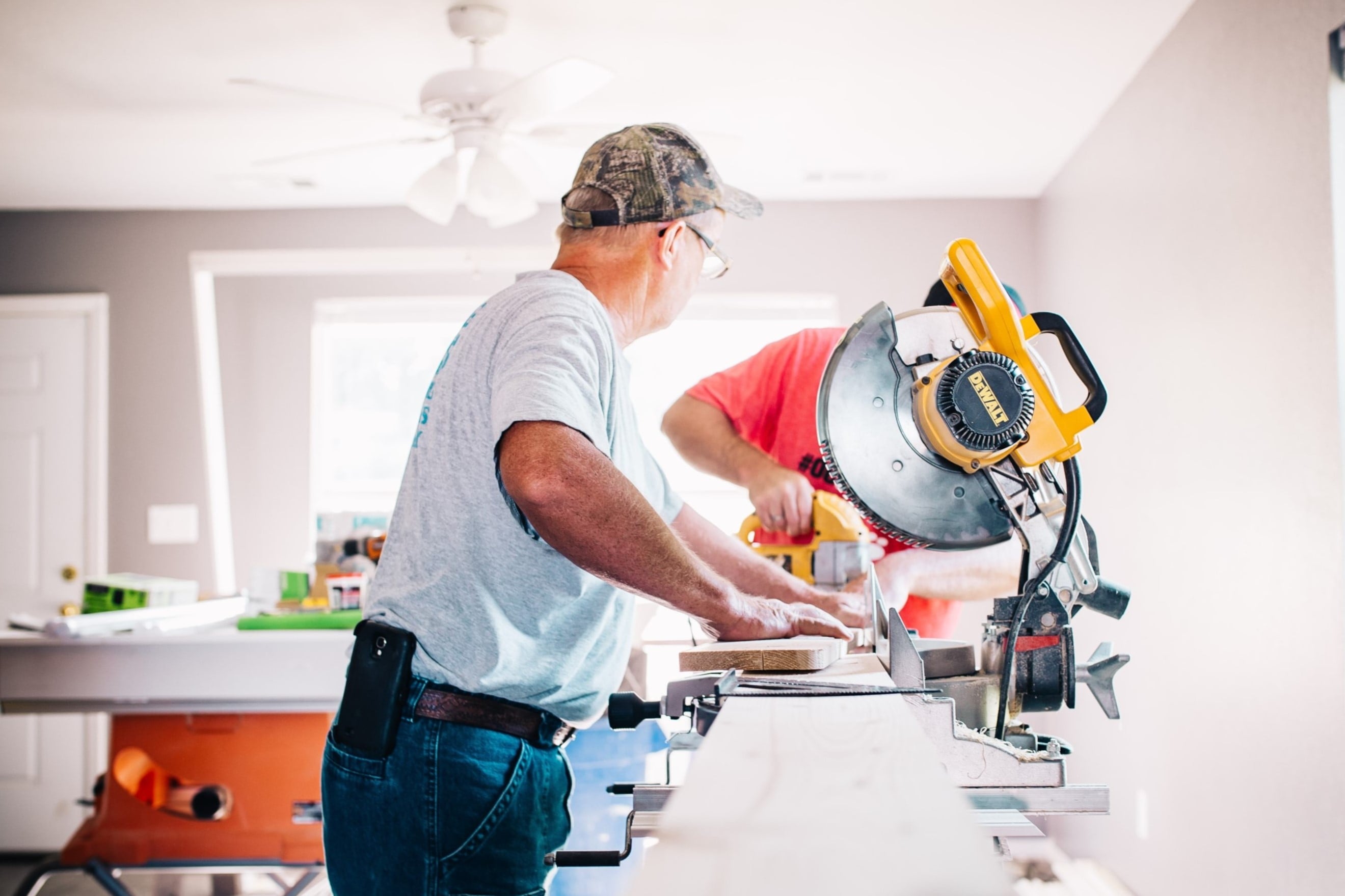

Home Maintenance
How To Market Your Home Repair Business Locally
Modified: March 6, 2024
Learn how to effectively market your home repair business locally and attract more customers with our expert tips. Find out how to boost your online visibility and reach your target audience.
(Many of the links in this article redirect to a specific reviewed product. Your purchase of these products through affiliate links helps to generate commission for Storables.com, at no extra cost. Learn more)
Introduction
Welcome to the world of home maintenance! As a business owner in the home repair industry, you know that attracting local customers is vital to the success of your venture. But how do you effectively market your business to your target audience in your local area?
In this article, we will explore various strategies and techniques to help you establish a strong local presence for your home repair business. From identifying your target market to building a strong brand identity and implementing effective marketing plans, we will cover it all.
So, let’s dive in and discover how to effectively market your home repair business locally!
Key Takeaways:
- Establishing a strong local presence through community involvement, a user-friendly website, and local SEO can help home repair businesses attract and engage with potential customers in their area.
- Building a strong brand identity, creating compelling content, and utilizing various marketing channels can help home repair businesses effectively reach their target audience and establish a lasting connection within their local community.
Read more: How To Market Your Home Improvement Business
Establishing a Local Presence
When it comes to marketing your home repair business locally, the first step is to establish a strong and visible presence in your local community. This not only helps to create brand awareness but also positions you as the go-to expert for home maintenance needs in your area.
One of the most effective ways to establish a local presence is by joining local business associations and community groups. This allows you to connect with other local businesses, build relationships, and gain exposure within the community. Additionally, consider participating in local events, such as trade shows, fairs, or home improvement expos, to showcase your expertise and interact with potential customers face-to-face.
Another crucial aspect of establishing a local presence is having a well-designed and user-friendly website. Your website should clearly display the services you offer, provide contact information, and feature a blog or resource section where you can share home maintenance tips and advice.
Furthermore, optimizing your website for local SEO is essential. This involves using location-specific keywords on your website, creating dedicated landing pages for different areas you serve, and optimizing your Google My Business page. By doing so, your business will have a better chance of appearing in local search results when potential customers are looking for home repair services in their area.
Identifying Your Target Market
Before you start marketing your home repair business locally, it is crucial to identify your target market. Understanding who your ideal customers are will allow you to tailor your marketing efforts to effectively reach and engage them.
Begin by conducting market research to gather information about your local area. Understand the demographics, such as age, income level, and homeowner status, in order to gain insights into the needs and preferences of your target audience.
Next, consider the specific services you offer and who would be most likely to require those services. For example, if you specialize in kitchen renovations, your target market may be homeowners who are looking to update their kitchens.
Once you have identified your target market, create buyer personas to clearly define the characteristics, preferences, and pain points of your ideal customers. This will help you personalize your marketing messages and effectively communicate the value you offer.
Additionally, consider conducting surveys or gathering feedback from previous clients to gain insights into their experience with your business. This will not only help you understand your target market better but also provide valuable testimonials and reviews that can be used in your marketing efforts.
By identifying and understanding your target market, you can focus your marketing efforts on reaching the right audience with the right message at the right time, ultimately improving your conversion rates and business growth.
Building a Strong Brand Identity
A strong brand identity is crucial for effectively marketing your home repair business locally. It helps differentiate your business from competitors, creates brand loyalty, and builds trust among your target audience. Here are some key steps to building a strong brand identity:
1. Define Your Brand: Start by clearly defining your brand values, mission, and unique selling proposition. Identify what sets your business apart and use that as the foundation for your brand identity.
2. Develop a Consistent Visual Identity: Create a logo, select a color palette, and choose fonts that represent your brand. Make sure to use these consistently across all your marketing materials, including your website, social media profiles, and printed materials.
3. Craft a Compelling Brand Story: Share your brand story and connect with your audience emotionally. Highlight your expertise, passion for home maintenance, and commitment to customer satisfaction.
4. Create a Voice and Tone: Develop a consistent tone of voice that reflects your brand values and resonates with your target audience. Use this tone of voice in all your communication, whether it’s on your website, social media, or customer interactions.
5. Engage with Your Local Community: Show your commitment to your local community by getting involved in local events, sponsoring community initiatives, or partnering with local organizations. This demonstrates your dedication to serving your community and deepens your brand connection with local customers.
6. Foster Positive Customer Experiences: Provide exceptional service to your customers, focusing on professionalism, reliability, and excellent craftsmanship. Happy customers are more likely to become brand advocates and word-of-mouth referrals.
7. Encourage and Leverage Customer Reviews: Positive customer reviews and testimonials act as social proof and enhance your brand reputation. Encourage satisfied customers to leave reviews on platforms like Google My Business or Yelp, and showcase these on your website and social media.
By focusing on building a strong brand identity, you can effectively position your home repair business in the local market and establish a lasting connection with your target audience.
Creating an Effective Marketing Plan
To successfully market your home repair business locally, it’s essential to have a well-defined and comprehensive marketing plan. Here are the key steps to creating an effective marketing plan:
1. Set Clear Marketing Goals: Determine your marketing objectives, such as increasing brand awareness, generating leads, or driving more website traffic. Your goals should be specific, measurable, attainable, relevant, and time-bound (SMART).
2. Understand Your Target Audience: Use the insights from identifying your target market to understand their needs, preferences, and pain points. This will help you tailor your marketing messages and select the most effective channels to reach them.
3. Choose the Right Marketing Channels: Consider a mix of online and offline channels that align with your target audience. This may include search engine optimization (SEO), social media marketing, email marketing, local directories, and print advertising.
4. Develop Compelling Content: Create high-quality, engaging content that provides value to your target audience. This can include blog posts, videos, step-by-step guides, and FAQs that address common home repair issues.
5. Implement Search Engine Optimization (SEO): Optimize your website and content with relevant keywords, meta tags, and headers to improve your organic search rankings. Localize your SEO efforts by including location-specific keywords to attract local customers.
6. Leverage Social Media: Maintain a presence on social media platforms where your target audience is active. Share informative posts, before-and-after project photos, customer testimonials, and engage with your followers by responding to comments and messages.
7. Utilize Local Directories and Listings: Ensure your business is listed on popular local directories such as Google My Business, Yelp, and Bing Places. Provide accurate and up-to-date information including your address, phone number, website, and services offered.
8. Implement Email Marketing Campaigns: Build an email list by offering valuable content or exclusive discounts to your website visitors. Send regular newsletters or targeted email campaigns with updates, tips, promotions, and customer success stories.
9. Track and Analyze Your Results: Use analytics tools to track the performance of your marketing efforts. Monitor website traffic, conversion rates, engagement metrics, and leads generated to identify areas for improvement and adjust your strategies accordingly.
10. Adapt and Evolve: Continuously evaluate the effectiveness of your marketing plan and make adjustments as needed. Stay up-to-date with industry trends and consumer preferences to keep your marketing strategies relevant and effective.
By creating an effective marketing plan, you can maximize your efforts, reach your target audience effectively, and achieve your marketing goals for your home repair business.
Read more: How To Market My Plumbing Business
Utilizing Local Directories and Listings
When it comes to marketing your home repair business locally, utilizing local directories and listings is a powerful strategy to increase your visibility and attract potential customers. These online platforms act as digital directories for businesses in specific locations, making them an ideal channel to showcase your services to local customers. Here’s how you can effectively utilize local directories and listings:
1. Claim Your Business Listings: Start by claiming and verifying your business listings on popular local directories such as Google My Business, Yelp, Bing Places, and Yellow Pages. This ensures that you have control over the accuracy and consistency of your business information.
2. Provide Accurate and Complete Information: Fill out your business profile on each directory with accurate and up-to-date information. Include your business name, address, phone number, website URL, hours of operation, and a brief description of your services.
3. Optimize Your Listings: Utilize relevant keywords and industry-specific terms in your business description to improve your visibility in local search results. Also, include high-quality images of your work and ensure that your branding is consistent across all listings.
4. Encourage Customer Reviews: Positive customer reviews and ratings can significantly impact a consumer’s decision-making process. Encourage satisfied customers to leave reviews on your listings by providing exceptional service and following up with a request for feedback.
5. Respond to Reviews: Engage with your customers by responding to their reviews, both positive and negative. Thank customers for their feedback, address any concerns, and showcase your commitment to customer satisfaction.
6. Utilize Local SEO Strategies: Optimize your business listings with local SEO techniques. This includes using location-specific keywords in your business description, adding your service areas, and ensuring consistent NAP (name, address, phone number) information across all directories.
7. Monitor and Update Your Listings: Regularly monitor your business listings to ensure that all information is accurate and up-to-date. Update your listings with any changes in address, phone number, business hours, or services offered.
8. Explore Niche Directories: Depending on the nature of your home repair business, consider listing your services on niche directories that focus on specific industries or services. This can help target a more specialized audience and increase the chances of connecting with potential customers looking for your specific services.
By effectively utilizing local directories and listings, you can increase your online visibility, improve your local search rankings, and attract more customers to your home repair business.
Leveraging Social Media Platforms
Social media has become an integral part of our daily lives, making it a powerful tool for marketing your home repair business locally. By leveraging social media platforms effectively, you can reach a vast audience, engage with potential customers, and build brand awareness. Here’s how you can leverage social media platforms for your marketing efforts:
1. Choose the Right Platforms: Identify the social media platforms where your target audience is most active. This could include popular platforms like Facebook, Instagram, Twitter, LinkedIn, or industry-specific platforms like Houzz or Angie’s List.
2. Create a Professional Profile: Set up a professional business profile on each chosen platform. Use your logo as the profile picture and include a concise and compelling bio that highlights your services and expertise.
3. Share Valuable Content: Regularly share informative and engaging content related to home repair and maintenance. This could include tips and tricks, before-and-after project photos, behind-the-scenes glimpses, and answers to frequently asked questions.
4. Encourage Interaction: Encourage your followers to interact with your content by asking questions, hosting polls, or running contests. Respond to comments and messages promptly to show your commitment to customer engagement.
5. Utilize Visual Content: Visual content is highly engaging on social media. Share high-quality images and videos of your completed projects to showcase your work and demonstrate your skills to potential customers.
6. Collaborate with Influencers: Partner with local influencers or industry experts who have a strong following on social media. Their endorsement or mention of your business can help boost your reach and credibility among their audience.
7. Utilize Paid Advertising: Consider running targeted social media advertising campaigns to reach a wider audience. Use demographic and location targeting options to ensure that your ads are displayed to potential customers in your local area.
8. Monitor and Respond to Reviews: Keep a close eye on reviews and ratings of your business on social media platforms. Respond to both positive and negative reviews promptly and professionally to show that you value customer feedback.
9. Share Customer Testimonials: Highlight positive customer testimonials and reviews on your social media platforms. This helps build trust and credibility, demonstrating that others have had positive experiences with your services.
10. Analyze Your Results: Use social media analytics tools to track the performance of your social media efforts. Monitor metrics such as engagement, reach, and follower growth to understand what content resonates best with your audience.
By leveraging social media platforms effectively, you can amplify your reach, engage with potential customers, and build a strong online presence for your home repair business in your local community.
Implementing Email Marketing Campaigns
Email marketing is a highly effective strategy for staying connected with your audience and driving business growth for your home repair business. By implementing well-crafted email marketing campaigns, you can nurture leads, build customer loyalty, and increase conversions. Here’s how you can effectively utilize email marketing:
1. Build an Email List: Start by building a permission-based email list of existing customers, potential leads, and website visitors. Offer valuable content or exclusive discounts in exchange for their email addresses.
2. Segment Your Email List: Divide your email list into different segments based on factors such as demographics, geographic location, or previous interactions with your business. This allows you to personalize your emails and tailor your messages to specific audience groups.
3. Create Compelling and Engaging Content: Craft engaging email content that provides value to your subscribers. This could include informative articles, seasonal home maintenance tips, project showcases, customer success stories, or exclusive promotions.
4. Personalize Your Emails: Use personalization tokens to address your subscribers by their name and tailor the content to their specific interests or needs. Personalized emails help foster a stronger connection and resonates better with your audience.
5. Use Eye-Catching Subject Lines: Capture your subscribers’ attention with compelling subject lines that entice them to open the email. Experiment with different subject lines to see what works best for your audience.
6. Optimize for Mobile Devices: Make sure your email campaigns are optimized for mobile devices, as a significant portion of your audience will be reading emails on their smartphones or tablets. Use responsive designs and ensure that your emails are easily readable and clickable on smaller screens.
7. Include Strong Call-to-Actions: Incorporate clear and enticing call-to-action buttons or links in your emails to prompt readers to take the desired action, whether it’s scheduling an appointment, requesting a quote, or exploring your services further.
8. Analyze and Refine: Track the performance of your email campaigns by analyzing metrics such as open rates, click-through rates, and conversions. Use this data to refine your email marketing strategy and optimize future campaigns.
9. Test and Experiment: Experiment with different email formats, layouts, subject lines, and content to identify what resonates best with your audience. Conduct A/B testing to compare the effectiveness of different email elements.
10. Respect Privacy Regulations: Ensure that you comply with email marketing regulations, such as obtaining proper consent from subscribers and providing an easy way to unsubscribe from your emails. Respect your subscribers’ privacy and use their information responsibly.
By implementing well-crafted email marketing campaigns, you can stay connected with your audience, nurture your leads, and drive business growth for your home repair business.
Utilize local advertising channels such as community newspapers, bulletin boards, and local radio stations to reach potential customers in your area. This can help you target your marketing efforts to the people who are most likely to need your home repair services.
Networking and Building Relationships within the Community
Networking and building relationships within the community are key components of successful local marketing for your home repair business. By connecting with other professionals and forming meaningful relationships, you can expand your reach, gain referrals, and establish yourself as a trusted expert. Here’s how you can effectively network and build relationships within your local community:
1. Attend Local Business Events: Participate in local business events, industry conferences, and meetups to meet other professionals and potential clients. These events provide valuable opportunities to network and showcase your expertise.
2. Join Local Business Associations: Become a member of local business associations, chambers of commerce, or trade organizations. These groups offer networking events, educational opportunities, and a platform to connect with like-minded professionals.
3. Volunteer in the Community: Engage in community service or volunteer work to not only give back but also gain exposure and build relationships. Sponsor local events, donate your services, or contribute to local improvement initiatives.
4. Participate in Online Forums and Groups: Join online forums and groups where local homeowners or DIY enthusiasts seek advice and recommendations. Contribute helpful insights, answer questions, and establish yourself as a knowledgeable professional in the field.
5. Collaborate with Local Businesses: Partner with complementary local businesses such as interior designers, real estate agents, or construction contractors. Offer reciprocal referrals and cross-promotion opportunities to tap into each other’s networks.
6. Develop Referral Programs: Encourage satisfied customers to refer your services to their friends, family, and colleagues by offering incentives or discounts. Word-of-mouth referrals can be a powerful source of new business.
7. Attend Homeowner Association Meetings: Attend local homeowner association meetings to network with homeowners and property managers. Share your expertise, answer questions, and demonstrate your commitment to improving the community.
8. Engage in Social Media Conversations: Participate in local social media groups or discussions where homeowners seek home repair recommendations. Offer valuable insights, demonstrate your expertise, and engage in conversations to build relationships.
9. Offer Educational Workshops or Webinars: Organize workshops or webinars where you share home maintenance tips or offer demonstrations. This positions you as an authority in the field and allows you to establish connections with attendees.
10. Follow Up and Maintain Relationships: Remember to follow up with the professionals and individuals you meet during networking events. Nurture these relationships by staying in touch, sharing valuable resources, and offering support when needed.
By networking and building relationships within the community, you can expand your professional network, increase referrals, and establish a strong presence for your home repair business in the local market.
Read more: How To Market A Home Inspection Business
Encouraging Customer Reviews and Testimonials
Customer reviews and testimonials play a crucial role in building trust and credibility for your home repair business. Positive reviews showcase the quality of your services and help potential customers make informed decisions. Here’s how you can encourage and leverage customer reviews and testimonials:
1. Provide Exceptional Service: The first step in encouraging positive reviews is to consistently deliver exceptional service. Focus on providing top-notch craftsmanship, professionalism, and excellent customer care to create a positive experience for your clients.
2. Ask for a Review: After completing a project, follow up with your customers and politely ask them to leave a review of their experience. Make it easy for them by providing links to your profiles on popular review platforms such as Google, Yelp, or Trustpilot.
3. Provide Clear Instructions: When asking for a review, guide your customers on the specific platforms or websites where you would like them to leave their feedback. Offer step-by-step instructions to make the process as seamless as possible.
4. Offer Incentives: Motivate your customers to leave reviews by offering incentives such as discounts on future services, exclusive promotions, or entry into a giveaway. This can increase participation and encourage satisfied customers to share their experiences.
5. Follow Up with a Thank You: Express your gratitude to customers who have left reviews by sending a personalized thank-you message. This shows your appreciation and reinforces the positive relationship with your customers.
6. Showcase Reviews on Your Website: Display customer reviews prominently on your website to demonstrate social proof to potential customers. Create a dedicated testimonials page or incorporate testimonials throughout your website’s content.
7. Share Reviews on Social Media: Highlight positive customer reviews on your social media platforms. Create eye-catching graphics or posts that feature snippets of reviews and encourage others to check out the full review on the respective platform.
8. Respond to Reviews: Engage actively with customers who leave reviews by responding to their feedback. Express gratitude for positive reviews and address any concerns or negative feedback in a professional and empathetic manner.
9. Leverage Video Testimonials: Consider requesting video testimonials from satisfied customers. Video testimonials have a strong impact as they allow potential customers to see and hear firsthand the positive experience others have had with your services.
10. Incorporate Reviews in Marketing Collateral: Use excerpts from positive reviews and testimonials in your marketing materials, such as brochures, flyers, or email campaigns. This reinforces your reputation and helps build trust in your services.
By encouraging customer reviews and testimonials, you can enhance your online reputation, build trust with potential clients, and drive more business for your home repair services.
Offering Referral Programs and Discounts
Referral programs and discounts can be powerful incentives to encourage satisfied customers to recommend your home repair business to their friends, family, and colleagues. By offering these rewards, you can increase brand advocacy, generate new leads, and ultimately boost your business. Here’s how you can effectively implement referral programs and discounts:
1. Develop a Referral Program: Create a formal referral program that rewards customers for referring your services. Provide clear guidelines on how the program works and the benefits customers can receive for successful referrals.
2. Offer Incentives: Incentivize your customers to participate in your referral program by offering rewards such as discounts on future services, cash rewards, gift cards, or free upgrades. Make the incentives appealing to encourage active participation.
3. Clearly Communicate the Program: Clearly communicate the details of your referral program to your customers. Include information about how they can refer others, the qualifying criteria, and the process for redeeming rewards.
4. Provide Referral Cards or Codes: Create referral cards or unique referral codes that customers can share with their network. This makes it easy for you to track and attribute referrals back to specific customers.
5. Leverage Email Marketing: Utilize your email marketing campaigns to promote your referral program. Send dedicated emails to your customers, reminding them about the program and the rewards they can earn for successful referrals.
6. Enhance Word-of-Mouth with Discounts: In addition to your formal referral program, consider offering discounts directly to new customers who are referred to your business. This can further incentivize potential customers to choose your services.
7. Create Social Media Shareable Content: Design social media graphics or posts that customers can easily share on their own profiles, promoting your referral program. Include eye-catching visuals and a clear call-to-action to encourage sharing.
8. Monitor and Track Referrals: Set up a system to track and monitor referrals generated by your customers. This can involve tracking referral codes or using dedicated software to accurately attribute referrals and rewards.
9. Express Gratitude: When customers refer others to your business, express your gratitude by sending personalized thank-you messages or small tokens of appreciation. Show that you value their support and referrals.
10. Monitor and Adjust: Regularly review the success and uptake of your referral program and discounts. Assess the impact on your business and make necessary adjustments to optimize the rewards and program structure based on your findings.
By offering referral programs and discounts, you can tap into the power of word-of-mouth marketing, incentivize customers to refer your services, and drive new business growth for your home repair company.
Utilizing Local Print Advertising
While digital marketing has become increasingly popular, local print advertising still holds value for promoting your home repair business within your community. Print advertising allows you to reach a targeted audience, establish a physical presence, and increase brand recognition. Here are some effective strategies to utilize local print advertising:
1. Identify Local Print Publications: Research local newspapers, magazines, community newsletters, and industry publications within your target area. Identify publications that align with your target audience and have a strong readership.
2. Craft Compelling Advertisements: Create eye-catching and visually appealing advertisements that clearly communicate your unique selling points and services offered. Use attention-grabbing headlines, captivating images, and concise messaging to capture readers’ attention.
3. Highlight Your Expertise: Showcase your expertise by including before-and-after project photos, testimonials, or industry certifications in your print advertisements. This helps establish credibility and trust among readers.
4. Include Clear Contact Information: Provide all the necessary contact details, including your business name, phone number, website, and physical address. Make it easy for potential customers to reach out and inquire about your services.
5. Utilize Local Direct Mail Campaigns: Consider sending targeted direct mail campaigns to homeowners in your local area. Develop a compelling offer or discount specifically for these mailers to encourage engagement.
6. Sponsor Local Events or Programs: Take advantage of local event programs or sponsorships. This can involve placing your advertisements in event programs or signage, showcasing your commitment to the local community.
7. Collaborate with Home Improvement Stores: Partner with local home improvement stores and leave your print materials, such as brochures or business cards, at the checkout counters or bulletin boards. This allows you to reach a targeted audience actively seeking home improvement solutions.
8. Advertise in Trade Directories: Consider advertising in trade directories or industry-specific publications that cater to the needs of homeowners. This helps you target individuals actively seeking professional home repair services.
9. Use Coupon Inserts: Include coupons or special offers in local coupon books or newspaper inserts. This encourages readers to take action and try your services, while also tracking the effectiveness of your print advertising efforts.
10. Monitor and Track Results: Implement a tracking system to monitor the effectiveness of your print advertising efforts. Use unique phone numbers, promotional codes, or landing pages to identify which publications or campaigns are generating the most leads.
Remember, print advertising works best when complemented by a strong online presence and other marketing strategies. By utilizing local print advertising, you can strategically target your local audience and increase brand visibility within your community.
Hosting Local Events and Workshops
Hosting local events and workshops is an effective way to engage with your community, position yourself as an expert in your field, and generate leads for your home repair business. These events provide valuable opportunities to connect with potential customers, showcase your skills, and build trust. Here’s how you can successfully host local events and workshops:
1. Choose a Relevant Topic: Select a topic that aligns with your expertise and addresses common concerns or interests of homeowners. This could be a workshop on DIY home repairs, a seminar on energy-efficient upgrades, or a demonstration of the latest trends in home design.
2. Find a Suitable Venue: Locate a venue that can accommodate your chosen event. This could be a community center, a local library, or even a shared workspace. Consider the size, amenities, and accessibility of the venue for your target audience.
3. Promote Your Event: Spread the word about your event through various channels. Utilize social media platforms, community bulletin boards, local newspapers, and industry-specific websites to advertise your event. Leverage your existing customer base by sending out email invitations and encouraging them to bring friends.
4. Prepare Engaging Content: Develop informative and interactive content for your event. This may include presentations, hands-on demonstrations, Q&A sessions, or panel discussions. Ensure that the content is relevant, easy to understand, and provides value to the attendees.
5. Offer Registration or RSVP: Encourage attendees to register or RSVP for your event online or through a designated phone number or email address. This allows you to manage the number of participants and prepare adequate resources and materials.
6. Provide Networking Opportunities: Create an environment that encourages interaction among attendees. Allow time for networking, provide networking breaks, and facilitate introductions to foster connections among participants.
7. Share Contact Information and Marketing Collateral: Collect contact information, such as email addresses or phone numbers, from attendees during the event. You can offer a sign-up sheet or collect business cards. Additionally, provide informative brochures, business cards, or promotional materials to attendees to take home.
8. Follow Up with Attendees: After the event, follow up with attendees to express your gratitude for their participation. Send a personalized email thanking them for attending and offer additional resources or exclusive discounts as a token of appreciation.
9. Seek Feedback and Reviews: Request feedback from attendees to understand their experience and areas for improvement. Encourage them to leave reviews on platforms like Google and Yelp to build your online reputation.
10. Continue the Engagement: Maintain the momentum by staying in touch with event attendees. Provide them with valuable content, tips, and updates through email newsletters or social media. This helps nurture the relationship and keeps your business top of mind.
By hosting local events and workshops, you can establish yourself as a trusted expert in your community, nurture relationships with potential customers, and generate leads for your home repair business.
Collaborating with Local Businesses or Contractors
Collaborating with local businesses or contractors can be a mutually beneficial strategy to expand your reach, increase referrals, and enhance your overall service offerings. By creating strategic partnerships and collaborating with others in your industry, you can tap into new customer bases and provide a comprehensive range of services to your clients. Here’s how you can effectively collaborate with local businesses or contractors:
1. Identify Complementary Businesses: Look for local businesses or contractors whose services complement yours. For example, if you specialize in kitchen remodeling, you could collaborate with a local cabinet maker, countertop installer, or appliance supplier.
2. Build Relationships: Reach out to potential collaborators and initiate a conversation. Attend local networking events, join industry associations, and engage in online communities to connect with like-minded professionals.
3. Establish a Referral System: Create a formal referral system with your collaborators where you mutually refer customers to one another. Clearly define the criteria for referrals and ensure that both parties understand the expectations and benefits of the partnership.
4. Offer Package Deals: Collaborate with other businesses to create package deals or bundled services that cater to specific customer needs. This can enhance the value proposition for customers and encourage cross-referrals between businesses.
5. Joint Marketing Efforts: Collaborate on marketing initiatives such as joint advertisements, co-branded materials, or shared social media campaigns. Pooling resources and leveraging each other’s networks can expand your reach and visibility within the local community.
6. Cross-Promote on Websites and Social Media: Cross-promote each other’s businesses on your websites and social media platforms. Feature collaborations, testimonials, or project showcases to showcase your partnerships and demonstrate a comprehensive range of services.
7. Collaborate on Projects: Consider partnering with local businesses or contractors on specific projects. This can allow you to leverage their expertise and resources, offer more comprehensive solutions to clients, and enhance the overall quality of the service delivered.
8. Share Resources and Insights: Collaborate on sharing industry insights, best practices, and resources with your partners. Exchange knowledge, tools, or insights that can benefit both businesses and help improve the quality of service for customers.
9. Attend Industry Events Together: Participate in industry trade shows, home improvement expos, or community events together. This showcases a united front, reinforces the collaboration, and allows you to interact with potential customers collectively.
10. Regularly Communicate and Evaluate: Maintain open lines of communication with your collaborators. Regularly assess the success of the partnership, address any challenges, and explore opportunities for further collaboration or improvement.
By collaborating with local businesses or contractors, you can expand your network, leverage expertise, and provide a comprehensive range of services to your clients. Together, you can create valuable synergies that benefit both your businesses and the customers you serve.
Tracking and Analyzing Your Marketing Efforts
To maximize the effectiveness of your marketing strategies for your home repair business, it’s essential to track and analyze your efforts. By monitoring key metrics and analyzing data, you can gain valuable insights into the performance of your marketing campaigns, identify areas for improvement, and make data-driven decisions. Here’s how you can effectively track and analyze your marketing efforts:
1. Set Clear Goals: Start by setting specific and measurable goals for each marketing campaign. Whether it’s increasing website traffic, generating leads, or improving conversion rates, having clear goals will help you track the success of your efforts.
2. Identify Key Performance Indicators (KPIs): Determine the KPIs that align with your goals. This could include metrics such as website traffic, click-through rates, conversion rates, customer acquisition cost, or return on investment (ROI).
3. Implement Analytics Tools: Utilize analytics tools such as Google Analytics, social media insights, or email marketing analytics to track and measure your marketing performance. Set up tracking codes, tags, or pixels for accurate data collection.
4. Monitor Website Traffic: Track the number of visitors to your website, the pages they visit, and the duration of their stay. Analyze the sources of traffic, whether it’s organic search, social media, or referral links, to identify the channels that drive the most engagement.
5. Analyze Conversion Rates: Evaluate the percentage of website visitors who take a desired action, such as submitting a contact form, requesting a quote, or making a purchase. Identify areas of your website or marketing funnel that may need improvement to increase conversion rates.
6. Measure Social Media Engagement: Analyze the engagement levels on your social media platforms, including likes, comments, shares, and click-throughs. Assess which types of content or campaigns resonate best with your audience and adjust your strategy accordingly.
7. Evaluate Email Marketing Performance: Track key metrics such as open rates, click-through rates, and conversion rates for your email marketing campaigns. Analyze the effectiveness of different subject lines, content formats, and call-to-actions to optimize your email marketing strategy.
8. Conduct A/B Testing: Experiment with different variations of your marketing materials, landing pages, or email campaigns using A/B testing. Compare the results to identify what resonates best with your audience and iterate on your marketing assets.
9. Analyze Return on Investment (ROI): Calculate the ROI of your marketing efforts by comparing the costs invested in a campaign to the revenue generated. Determine which marketing channels or campaigns deliver the highest ROI and allocate your resources accordingly.
10. Continuously Optimize Your Strategy: Regularly review the data and insights gathered from the tracking and analysis process. Identify trends, patterns, and areas for improvement. Use these insights to refine your marketing strategies, allocate resources effectively, and achieve better results.
By consistently tracking and analyzing your marketing efforts, you can make informed decisions, optimize your strategies, and achieve better results for your home repair business. Use the data-driven insights to continuously improve your marketing campaigns and maximize your return on investment.
Conclusion
Marketing your home repair business locally requires a strategic and comprehensive approach. By following the strategies outlined in this article, you can establish a strong local presence, effectively reach your target market, and build a solid reputation in your community.
From identifying your target market to building a strong brand identity, creating an effective marketing plan, and utilizing various marketing channels, every step plays a vital role in attracting local customers and growing your business.
Engaging with your audience through social media, email marketing, and local events allows you to showcase your expertise, provide valuable content, and build meaningful relationships with potential customers.
Encouraging customer reviews and testimonials helps build trust and credibility, while offering referral programs and discounts incentivizes customer loyalty and drives word-of-mouth referrals.
Don’t overlook the power of local print advertising, as it can still make a significant impact in your community and further establish your brand presence.
Lastly, tracking and analyzing your marketing efforts enables you to make data-driven decisions, refine your strategies, and ensure that your efforts are generating the desired results.
Remember, marketing your home repair business locally is an ongoing process. Continuously monitor and adapt your strategies to stay ahead of the competition and meet the ever-changing needs of your target audience.
By implementing these strategies and staying committed to providing exceptional service, you can effectively market your home repair business locally and position yourself as the go-to expert in your community.
Frequently Asked Questions about How To Market Your Home Repair Business Locally
Was this page helpful?
At Storables.com, we guarantee accurate and reliable information. Our content, validated by Expert Board Contributors, is crafted following stringent Editorial Policies. We're committed to providing you with well-researched, expert-backed insights for all your informational needs.
